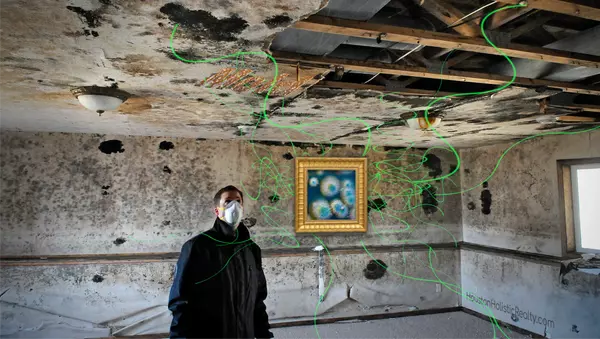As a holistic realtor specializing in the greater Houston area, I often get questions about the materials used in homes. One material that frequently comes up is stucco. Let’s break down what stucco is, the potential risks, and the challenges of maintaining a stucco home, especially in humid climates like Houston.
What is Stucco?
Stucco is a building material that’s been used for centuries. It’s a mix of cement, sand, and water, applied in layers over a wire or metal framework. Stucco is known for its durability, fire resistance, and energy efficiency. Modern stucco can also include additives to improve its flexibility and lifespan. These benefits have made stucco a common choice in various regions.
The Risks of Stucco
While stucco has its benefits, it’s important to be aware of the potential risks, especially if it’s not installed or maintained properly. Here are the main concerns:
-
Moisture Intrusion: The biggest risk with stucco is water getting inside the walls. If it’s not installed right or gets damaged, moisture can seep in, causing mold growth. Mold can lead to wood rot and structural issues, which is a major concern in humid or rainy areas like the Houston Bay Area.
-
Cracking and Bulging: Over time, stucco can crack due to house settling, temperature changes, or poor installation. These cracks can allow water to penetrate, leading to mold development and subsequent damage, making the home susceptible to further water damage and reducing its aesthetic appeal.
-
Maintenance Needs: Stucco requires regular check-ups. Homeowners need to look for cracks and damage regularly and fix issues quickly. Ignoring maintenance can allow mold to grow unchecked, exacerbating the initial problem and leading to more significant structural damage over time.
What Causes Stucco Problems?
Several factors can lead to stucco issues:
-
Improper Installation: The top cause of stucco problems is incorrect installation. If it’s not applied right or if the base structure isn’t prepped correctly, cracks and moisture problems can arise, leading to mold growth.
-
Neglecting Maintenance: Skipping regular maintenance can turn small problems into big headaches over time. Unaddressed cracks can allow mold to develop and spread.
-
Environmental Factors: Extreme weather, like heavy rain, high humidity, and temperature swings, can stress stucco and cause it to break down. Moisture penetration in these conditions can lead to mold growth.
Risk vs. Location
The risks of stucco vary depending on where you live. Here’s how location affects stucco performance:
-
High Humidity Areas: In places like the Houston Bay Area, with high humidity and frequent rain, the risk of moisture problems is higher. Constant exposure to moisture can lead to mold and wood rot if the stucco isn’t properly installed or maintained.
-
Dry Climates: In dry areas, like parts of California and the southwestern U.S., moisture is less of an issue, but temperature changes can cause stucco to crack as it dries out, potentially leading to mold growth if water does penetrate.
-
Coastal Areas: Homes near the coast face the challenge of salt air, which can corrode and damage many materials, including stucco. Regular maintenance is crucial in these areas to prevent mold and other issues.
-
Cold Climates: In colder regions, the freeze-thaw cycle can be tough on stucco. Water can get into small cracks, freeze, and expand, causing more damage and potentially leading to mold growth when the ice melts.
Keeping Your Stucco Safe
With the right care, stucco can be a durable and attractive choice for your home. Here’s how to keep it in top shape:
Hire Skilled Pros: Make sure stucco is installed by experienced professionals who follow best practices. Proper installation prevents future issues and mold growth.
Regular Inspections: Check your stucco regularly for cracks, bulging, or signs of water damage. Catching problems early can save you from costly repairs and mold remediation.
Fix Issues Promptly: Repair any cracks or damage as soon as you spot them. Small cracks can be sealed with stucco patching compounds, while bigger issues may need professional help to prevent mold from developing.
Waterproofing: Consider adding a waterproof barrier under the stucco for extra protection against moisture, especially in wet or humid areas, to reduce the risk of mold growth.
Conclusion
As a holistic realtor, I aim to help you make informed decisions about your home purchase. While stucco can have its challenges, understanding the risks and taking proactive steps can help you enjoy its benefits. Whether you're buying or selling a stucco home in the Houston Area, proper installation and maintenance are key to protecting your investment and preventing mold issues.
For more tips on finding healthy homes and making smart real estate choices, feel free to contact me. Together, we can navigate the housing market and find a home that fits your wellness and lifestyle needs.











